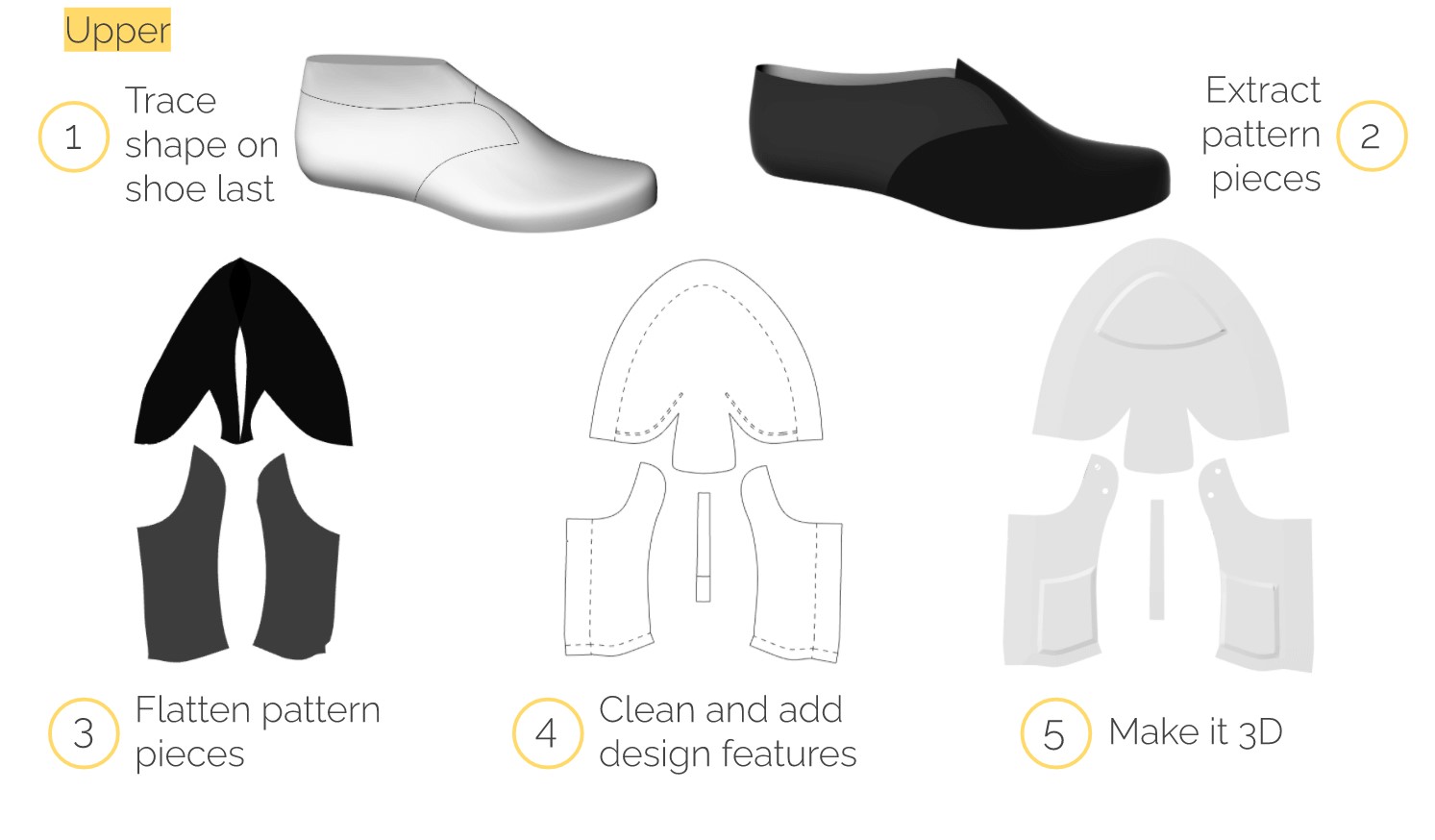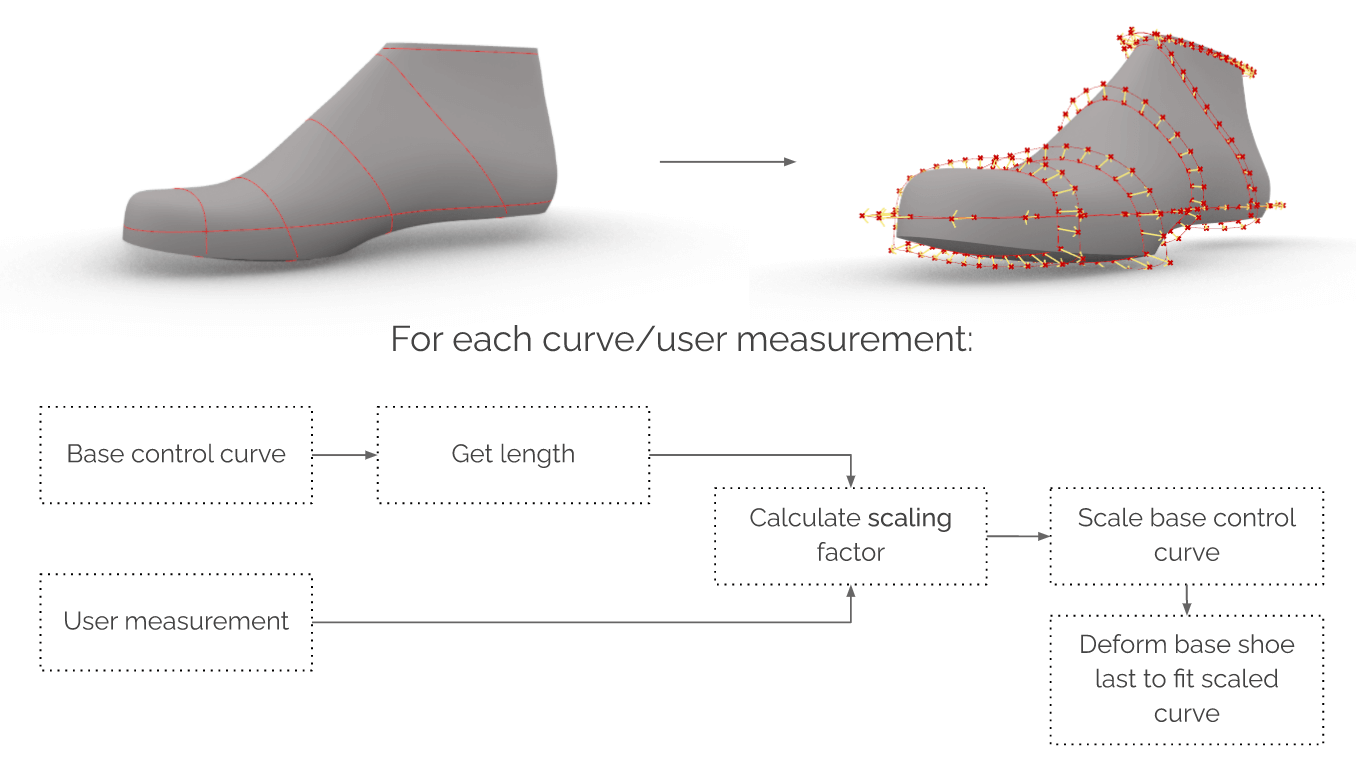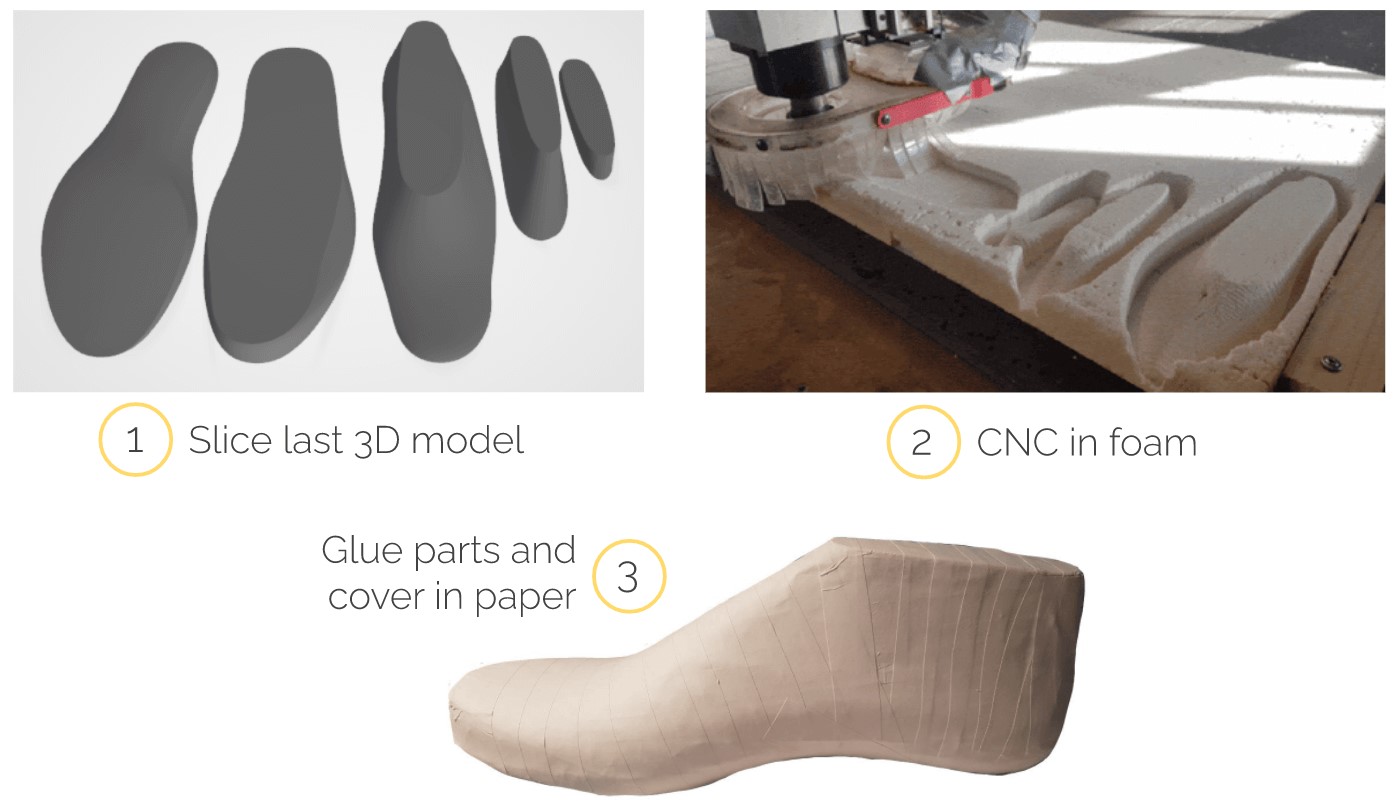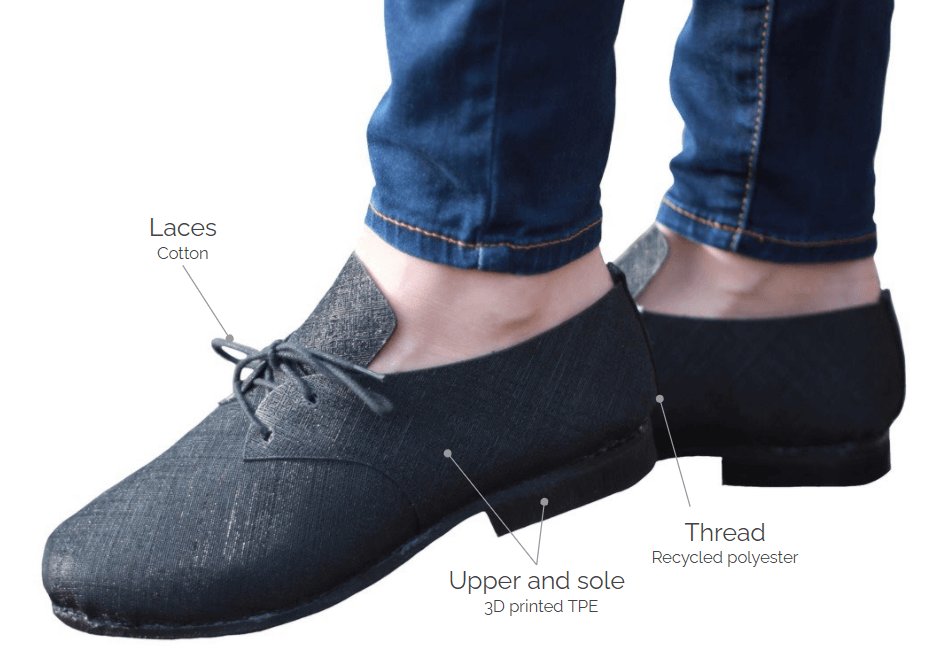Method and instructions¶
The mindset was to use the extensive knowledge created over centuries around shoe making and apply it using new materials and tools.
3D printed fabric¶
The material was the starting point. During Fabricademy's computational couture week I had the chance to experiment with flexible 3D printer filament and their application to make pieces that resembled fabric.
Instructions to make 3D printed fabric
The instructions on how to make this material can be found here.
Shoe pattern design¶
The design of the shoe pattern is done using the traditional method of tracing the design on the shoe last and then extracting the pattern pieces from there. The only difference is that it is done fully digitally in Rhino.


These pattern pieces are 3D printed using the parameters to make 3D printed fabric as explained above, and then assembled together on top of a shoe last.
For this project just one shoe style was developed, but this method can be used to make any other design you can imagine.
Rhino shoe design file
Rhino file with shoe design: download here
Parametric shoe last and pattern¶
So far the parametric design for the shoe last has been developed and the shoe pattern is in process.
Both are developed in Grasshopper using similar concepts.


Rhino and Grasshopper parametric shoe last files
- Rhino file with base shoe last: download here
- Grasshopper file with parametric definition for the last: download here

Custom made shoe lasts¶
For the assembly of the shoe, custom made shoe lasts are created to ensure correct fit of the shoes. During [Textile as scaffold week] I had the opportuinity to work with CNC machine, and I ended up making a shoe last using insulation foam.
Using foam turned out to be a great solution, as the shoe upper can be easily pinned to the last in the moulding process. Besides that, the foam is heat resistant up to 300C for short periods of time, which allows for the heat molding process needed to make the shoes.

Instructions to make custom shoe lasts
The instructions on how to make shoe lasts using CNC can be found here.
Assembly of the shoes¶
One of the core motivations for this project is to make a shoe which material can be reused easily at the end of their life. That is why I didn’t want to use glue to attach part together, so as not to contaminate the base material with other components. Since the body of the shoe is made out of TPE plastic, I thought of melting the different parts together instead. For that I used heat gun, soldering iron and 3D pen in different parts of the shoe.
The steps to assemble a shoe are as follows:
- Step 1: 3D print upper pieces flat, midsole and sole.
- Step 2: assemble upper by sewing and 3D pen.
- Step 3: Last upper with pins and mold with heat gun
- Step 4: Attach upper to midsole with soldering iron
- Step 5: Attach sole to upper with 3D pen
The following video shows some snaps of how the process looks like.
Recycling process¶
The recycling process for the shoes is fairly simple. 98% of the shoe is 3D printed TPE, and the other components (thread and laces) can be easily detached for recyling.

In collaboration with a 3D print filament producer, the shoes are collected at the end of their life and cleaned so that only TPE remains. Then they are shredded into small pellets and made into new filament for 3D printing. This way, the old shoes can be made into new shoes.
